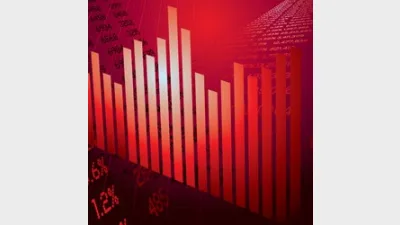How to prepare your clients for a recession



Stephen Hart highlights the four most important things to think about ahead of a recession.
With the recent news from Europe and stock markets plunging worldwide, the threat of recession will be looming in the minds of many investors.
Set against a potential change in the interest rate environment and action pursued by the Reserve Bank of Australia, investment decisions — even take-no-action decisions — need careful consideration.
Here are things to think about for your clients, particularly those holding portfolios with direct securities.
This list is far from exhaustive, but planners should give it careful consideration.
- Pay greater attention to the underlying risk of investments. In difficult economic times, downside surprises are usually more challenging;
- Think about diversification with a view to ensuring that as growth portfolios fall in value other assets in the portfolio will enjoy a rise;
- Concentrate on long-term fixed rate exposure; and
- Anticipate the inevitable steepening of the interest rate yield curve.
Review risk
 You can evaluate the risk/return of various asset classes using available data.
You can evaluate the risk/return of various asset classes using available data.
The various asset class risk/returns to March 2010 are shown in figure 1 using a variety of start dates. The Index Series considered are:
- Elstree Hybrids Market total Accumulation Index (Hybrid);
- ASX 200 accumulation index (Dom_Eq.);
- Standard & Poor's 500 local return index;
- UBS Australia Bank Bill Index Bank Bills, using the (B_Bill);
- UBS Australia Composite 0+ yrs Nominal Bond Index (Comp);
- UBS Australia Credit 0+ yrs Indexed Linked Bond Index (ILB_Credit); and
- UBS Australia Government 0+ yrs Indexed Linked Bond Index (ILB_Gov).
All equity data reflects local index returns and ignores foreign exchange data.
The reader can conclude that the fixed income indices reveal significantly less risk than the equity indices, it being apparent that the extra return sought by equity investors demands significantly more risk — other than in the case of Index Linked Bond credit.
The solid points in figure 1 are actual indices while the point marked ‘X’ represents an estimate; the volatility estimate is derived from the UBS 0+ Credit Index, while the return is forward looking.
In the case of return, the UBS credit index does not give an accurate forward-looking view because wrapped issues such as the Lane Cove Tunnel dominate the index.
Deterioration of the mono-line insurance companies meant that a large amount of the credit index fell significantly in price while some exited the index altogether.
Such changes would not be expected looking forward, rather, it is more likely that only high quality issuers would enter the market at a spread of 150-200 basis points over 10 to 20 year inflation linked swap — around a 5 per cent real return.
If you were to purchase a security at this level and inflation averaged around 2.5 per cent over the next 10 to 20 year period, the nominal return would approximate 7.5 per cent.
Consider diversification
As figure one suggests, an Index Linked Bond should deliver you roughly an equity return but with significantly less risk.
As economic difficulties worsen and the threat of recession looms, interest rates will normally fall and nominal bond prices will rise — quite handy when your equity portfolio is heading south!
This type of portfolio diversification is very important ahead of or after entering a recessionary period. In fact there is a solid argument for adoption of this strategy on a permanent basis.
Consider again the events between November 2007 and January 2009 when the share market fell dramatically, as shown in figure 2.
A diversified portfolio (eg, 33 per cent equities, 33 per cent bonds, and 33 per cent bank bills) would have ridden through this period of equity downturn reasonably well.
Consider lengthening the term of your interest rate securities
Ahead of a recession investors should turn their attention to longer-term interest rate securities. As interest rates fall the longer-dated securities will deliver a higher return, noting that longer-dated securities are more sensitive to interest rate movements than shorter-dated securities.
As figure 3 shows, the UBS composite index outperformed the UBS bank bill index because the UBS composite index has a much longer duration than the bank bill index.
Anticipate the steepening of the interest rate curve
As short-term interest rates fall, the interest rate curve tends to steepen. Short-term rates will shadow the reducing cash rate more closely than the long-term rate.
The correlation between the two yield curves is shown in figure 4.
The red line reflects the yield on the ten-year Sydney Futures Exchange (SFE) contract minus the yield on the three-year SFE futures contract (we use this measurement to better show movement at the longer end than the normal 10 year swap rate will show) and the blue line, being the SFE bank bill rate, is substantially negatively correlated (a negative correlation of about 40 per cent).
This confirms that falls in short term interest rates (SFE bank bill contracts) generate a steepening in the long-term yield curve.
Conclusion
While the prospects for global growth remain unclear, planners need to be extra vigilant in managing their client portfolios and reflecting on recent experience.
While we all hope a recession is not around the corner, we can better prepare our clients for this by taking action to improve investment outcomes.
The four suggestions outlined above can apply to any portfolio, but are of greatest relevance for clients holding direct securities.
Fixed income plays a significant role in many portfolios, particularly as a defensive asset class in preparation for challenging times.
Ahead of a possible second downturn, local investors would be well advised to consider fixed income assets on the basis of the suggestions above in case a recession in Australia does eventuate.
Stephen Hart is director of planner services at FIIG Securities.
Recommended for you
In this episode of Relative Return Insider, host Keith Ford and AMP chief economist Shane Oliver unpack the RBA’s decision to keep the cash rate on hold in the face of rising inflation and whether the governor’s hawkish tone is a sign of things to come.
In this episode of Relative Return Insider, host Keith Ford and AMP chief economist Shane Oliver discuss the September quarter GDP figures, which show Australia’s economy regaining momentum.
In this new episode of The Manager Mix, host Laura Dew speaks to Haley Devine, head of wealth management at MaxCap Group, to delve into private credit and commercial real estate.
In this new episode of The Manager Mix, host Laura Dew speaks to Benjamin Leung, head of systematic investments at Macquarie Asset Management, to understand the use of systematic investments.







